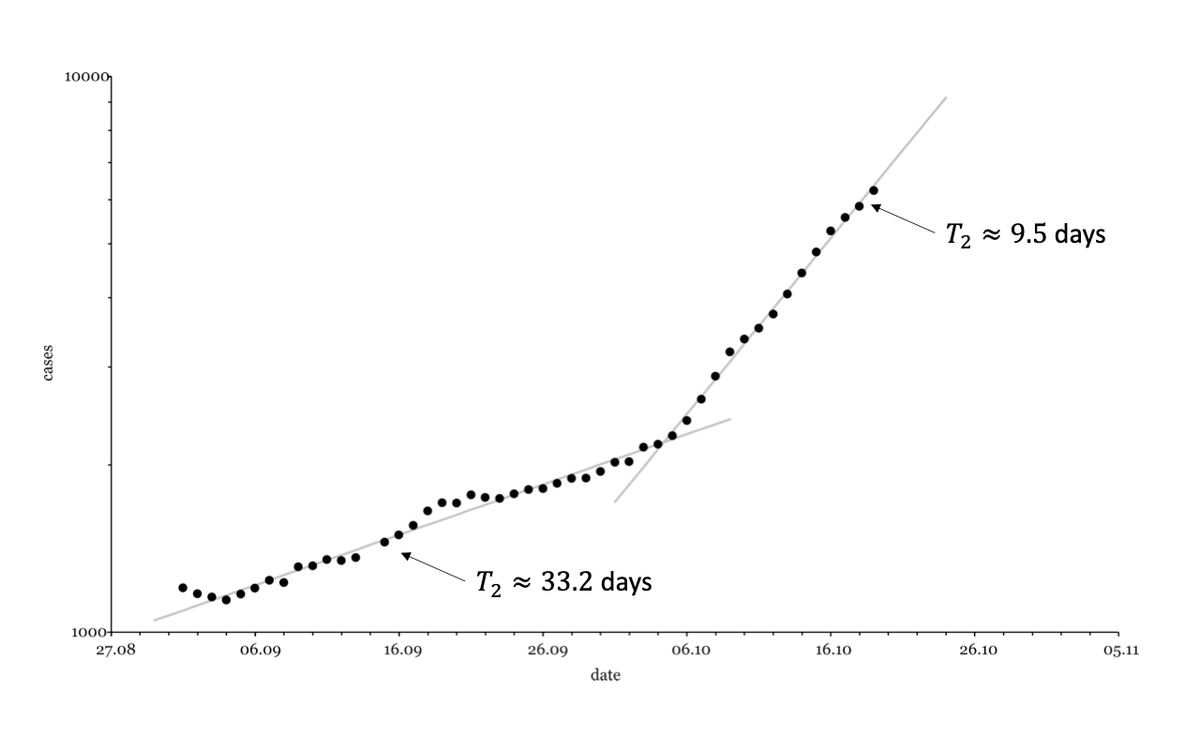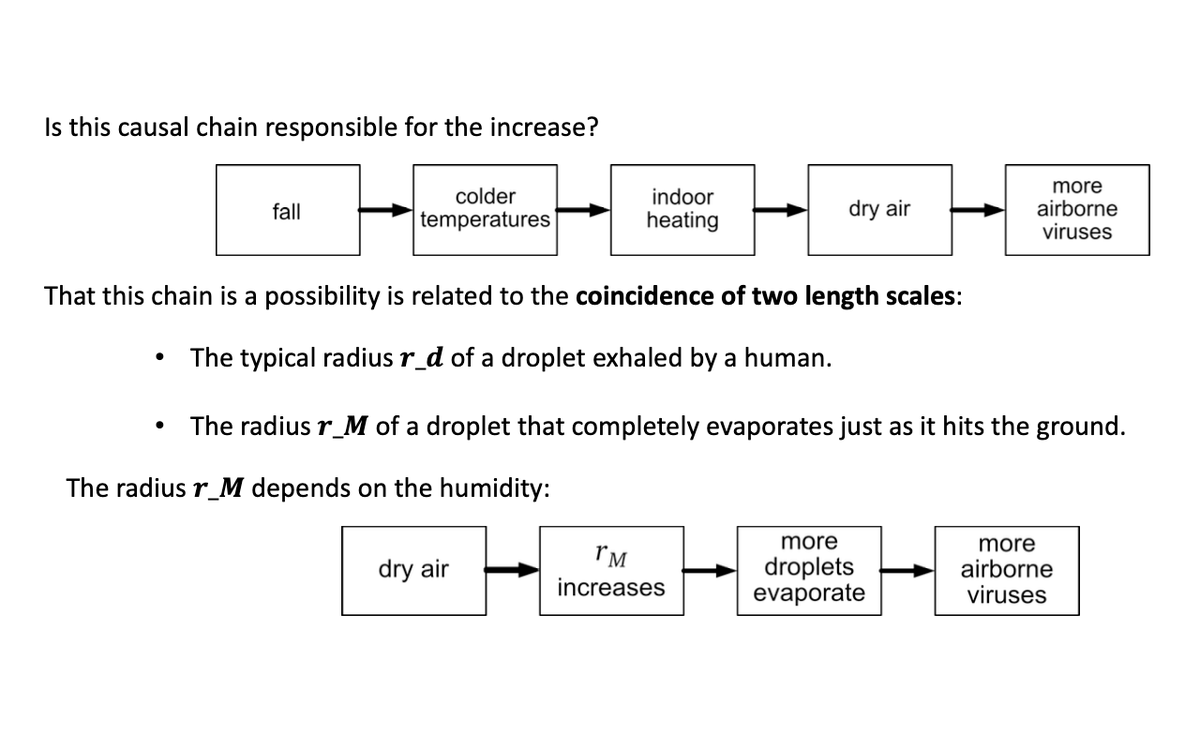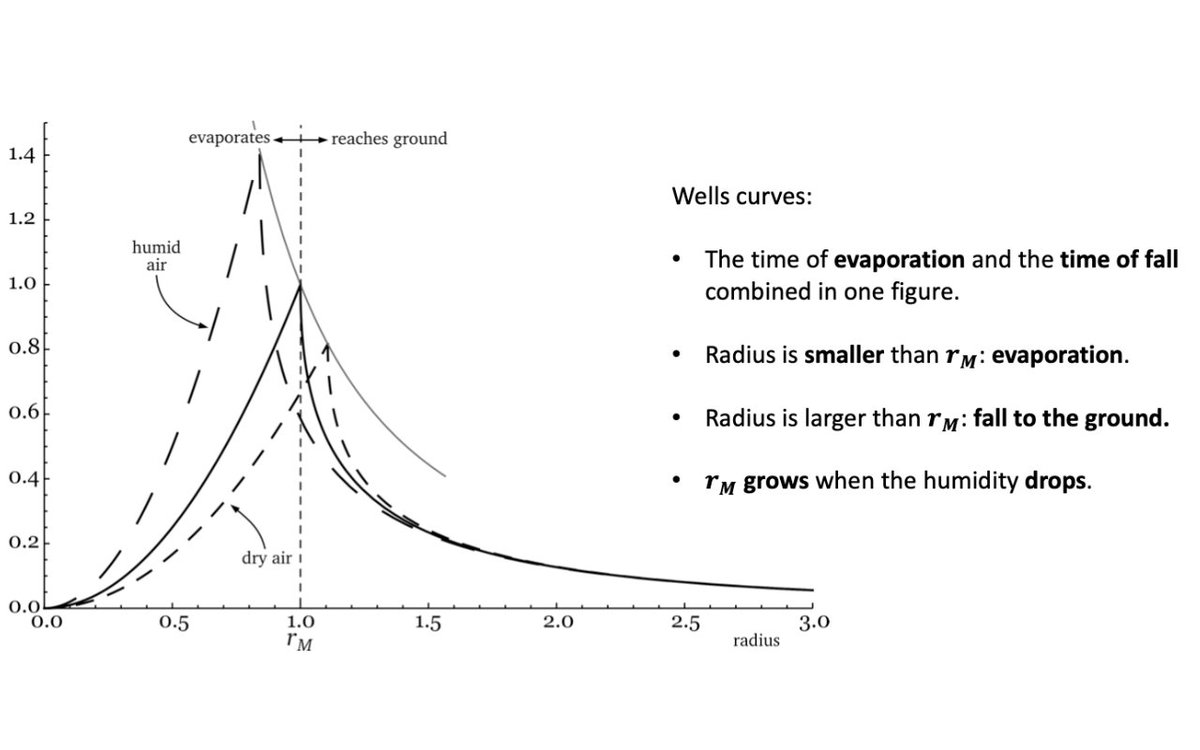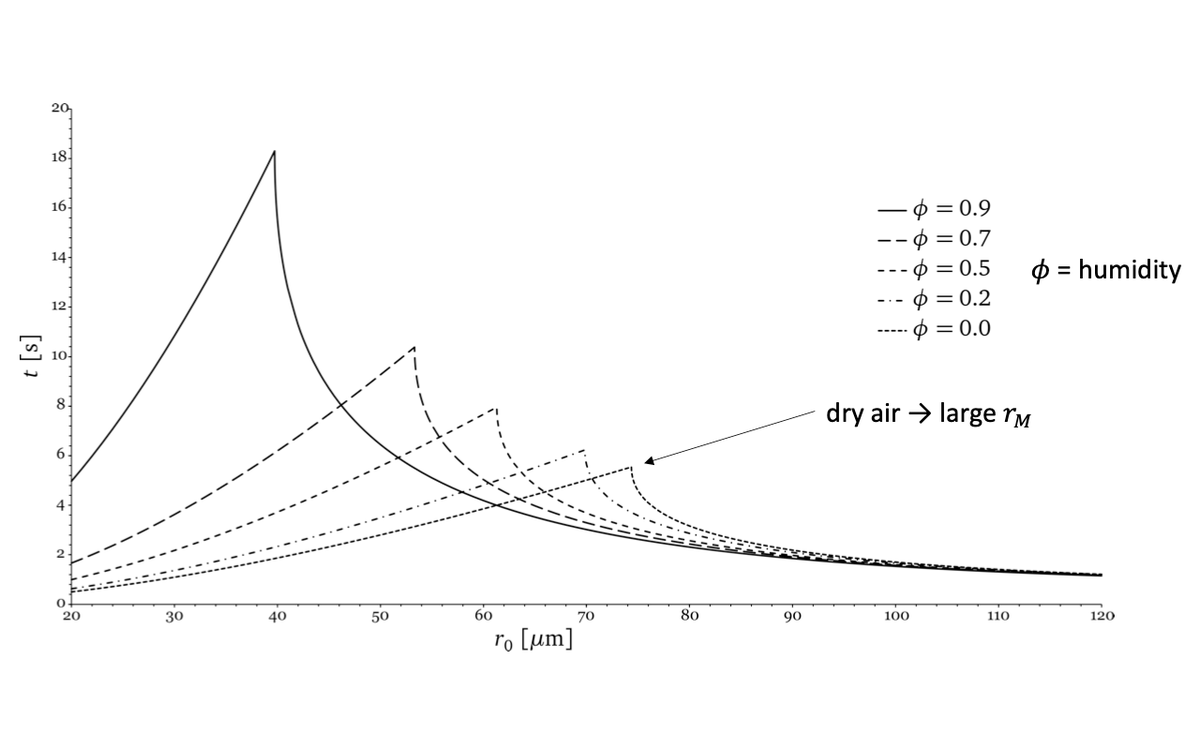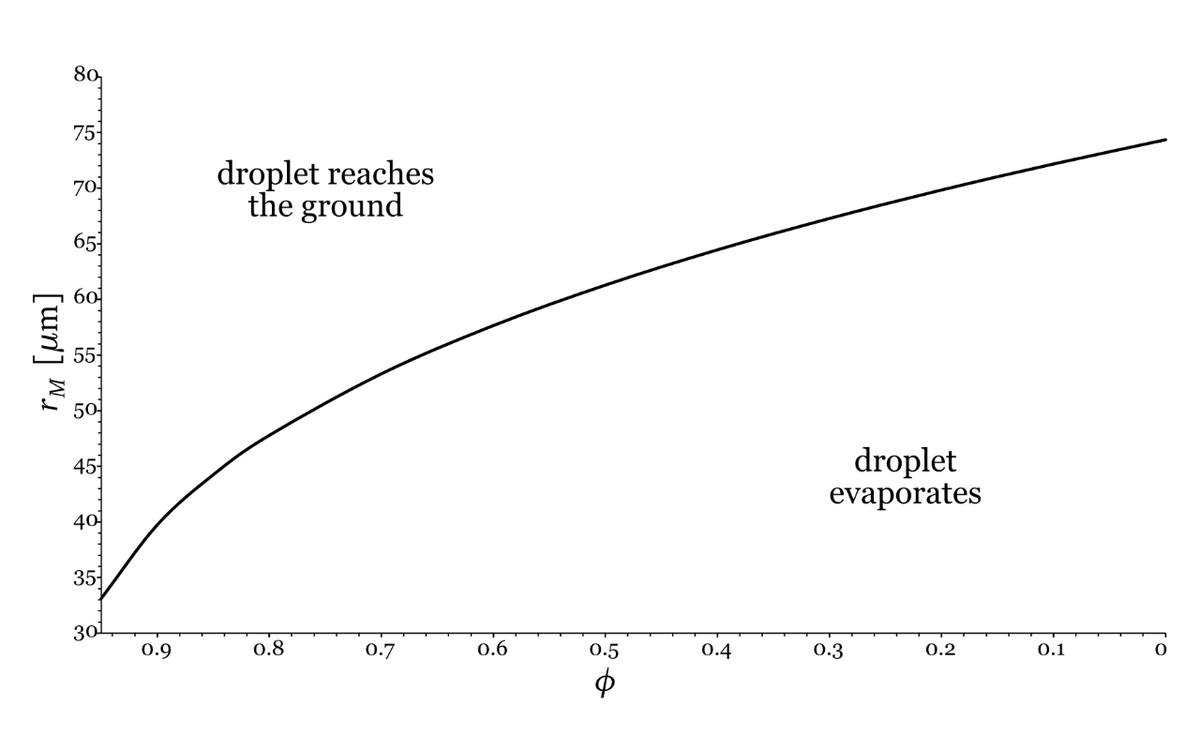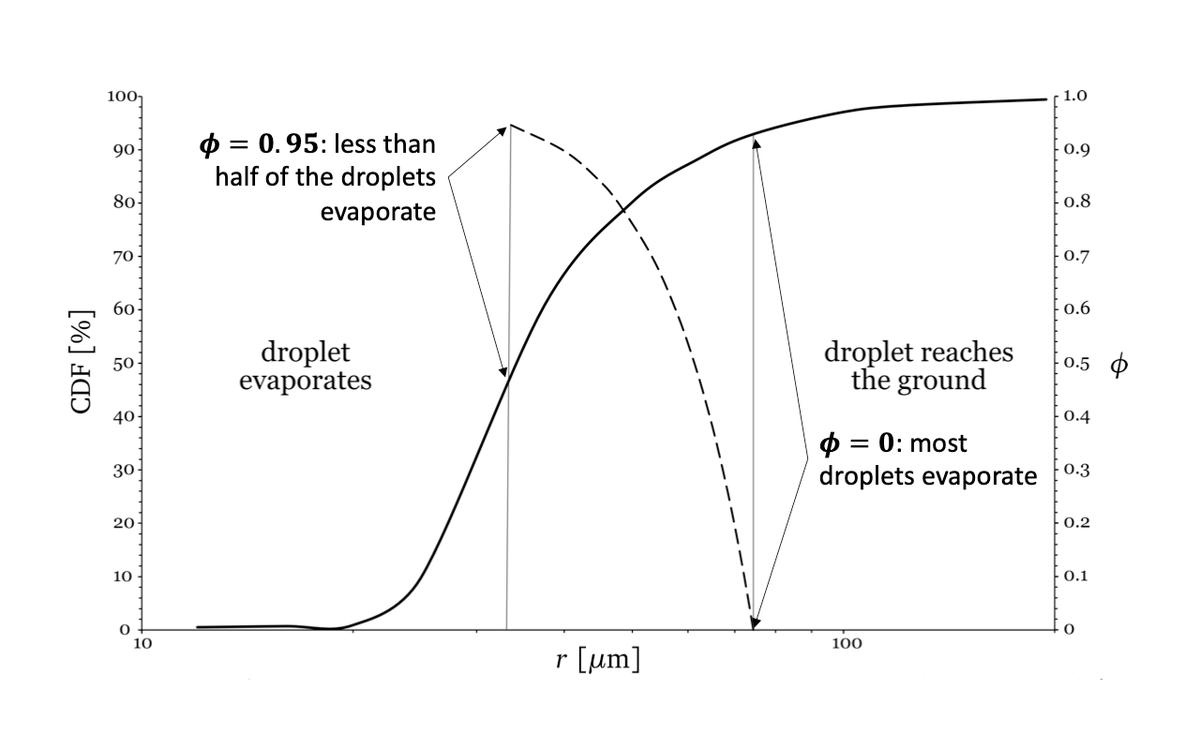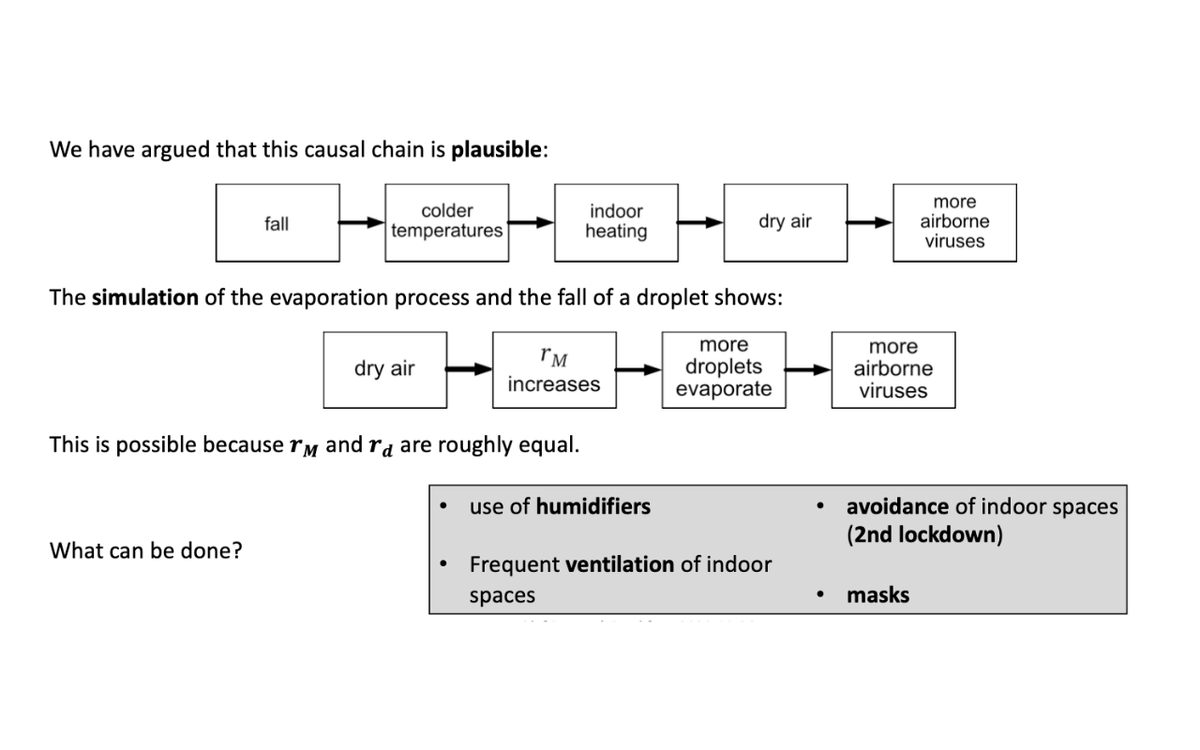A long(ish) and technical thread about the recent rise of #COVID cases in Germany. The doubling time went from 33.2 days to 9.5 days.
The question is why?
The question is why?
One thing changed in early October: we started to use indoor heating and with it changed the humidity around us.
Conjecture: It is the change in humidity that is responsible for the increase.
Conjecture: It is the change in humidity that is responsible for the increase.
This is a Wells curve (this is the technical part). It describes the fate of droplets when they fall to the ground. Droplets can have two fates: evaporate or reach the ground. When they evaporate they become airborne carriers of the virus.
I made a simulation to calculate the Wells curves as the humidity changes. This picture is the result.
The important point: the *lower* the humidity the *more* droplets evaporate.
Or: the *lower* the humidity the more airborne viruses.
The important point: the *lower* the humidity the *more* droplets evaporate.
Or: the *lower* the humidity the more airborne viruses.
This plot shows the radius of those droplets that just make it to the ground before they evaporate completely. As the humidity falls the radius grows, i.e. more droplets evaporate and give rise to airborne viruses.
This is the key point: The typical radius of droplets exhaled by humans is in the range seen above.
Low hum. -> droplets evaporate
High hum. -> droplets fall to the ground
This is a *very* curious coincidence.
This might be the reason for the increase in cases.
Low hum. -> droplets evaporate
High hum. -> droplets fall to the ground
This is a *very* curious coincidence.
This might be the reason for the increase in cases.
The use of indoor heating might have caused the increase of #COVID19 cases.
What to do?
One new addition might be the use of *humidifiers* and frequent *ventilation* of indoor spaces.
What to do?
One new addition might be the use of *humidifiers* and frequent *ventilation* of indoor spaces.
More details can be found here:
https://github.com/olafdreyer/covid
There">https://github.com/olafdreye... is a pdf in the doc folder.
@CiesekSandra @rki_de @CDCDirector @johnauthers @NIAIDNews
https://github.com/olafdreyer/covid
There">https://github.com/olafdreye... is a pdf in the doc folder.
@CiesekSandra @rki_de @CDCDirector @johnauthers @NIAIDNews

 Read on Twitter
Read on Twitter